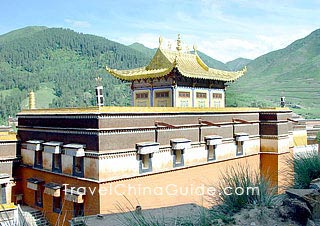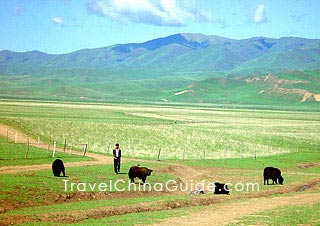Xiahe Travel Guide
Xiahe Facts
Chinese Name: 夏河 (xià hé)
Population: 90,300
Area: 6,274 square kilometers (2,422 square miles)
Location: in the southwest of Gansu Province, northwestern China
Area Code: 0941
Zip Code: 747100
GDP (2018): CNY 1.8 billion (USD 0.27 billion)
Fancy Sangke Grassland & Tibetan Buddhism Culture
Xiahe, a county under the jurisdiction of Gannan Tibetan Autonomous Prefecture, lies in the southwest of Gansu Province. On the northeast edge of Qinghai-Tibet Plateau, it is located between 35°12' north latitude and 102°31' east longitude. Xiahe is named after the Xiahe River and has different landscapes ranging from towering mountains, valleys, grasslands and forests. The profound Tibetan Buddhism and various custom activities are also highlights of Xiahe. Labrang Monastery, one of the six main temples of the Gelug school of Tibetan Buddhism is located in the western region of the county. And the beautiful Sangke Grassland is nearby.
Labrang Monastery: Located at the foot of the Phoenix Mountain northwest of the county, Labrang Monastery is the first must-see attraction. It is one of the six great monasteries of Gelukpa sect as well as the location of Gansu Provincial Buddhism College. The Labrang Monastery boasts tens of thousands of statues of Buddha made of gold, silver, copper, and aluminum, as well as many Buddha hats and many Buddhist treasures adorned with pearls, jadeite, agate and diamonds.
Sangke Grassland: Located about ten kilometers west of the county, Gansu province, Sangke Grassland enjoys a good reputation in the northwest Tibetan district for its excellent pasture and frequent magnificent Buddhist ceremonies. Sangke Grassland is an ideal place to experience the nomadic life, spend summers and return to the nature. It is also a nice place to appreciate the Tibetan folk culture to the full by wearing Tibetan costumes and riding horses or yaks across the land.
|
|
Recommended Tours
7-Day Xi'an - Lanzhou - Xiahe - Labrang Tour
A Complete Guide to 4-Day Visit to Linxia and Xiahe
How to get to/around Xiahe
1. Gannan Xiahe Airport is 72 kilometers (45 miles) away from Xiahe County and 56 kilometers (35 miles) from Hezuo City. The airport operates direct flights from / to Xi'an, Yinchuan, Chengdu, Tianjin and Lhasa. There is no airport shuttle bus, so taxi is the better way to downtown.
2. It is easy for passengers to take long-distance bus to other places. Xiahe Bus Station is about 1.5km away from the entrance to the monastery and the main concentration of guesthouses. Frequent Buses operate onward to Xiahe in 3-4 hours and to Linxia in 2 hours. One bus daily runs to Langmu Monastery in 4 hours and one bus daily leaves for Tongren in about 3 hours.
3. It is cheap to take a taxi to travel around the area. A round-trip between Xiahe and Sangke Grassland only costs about CNY 40 by taxi.

